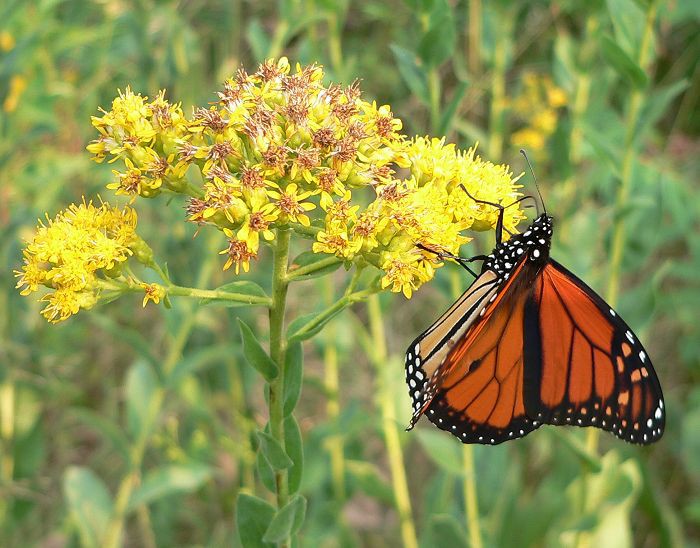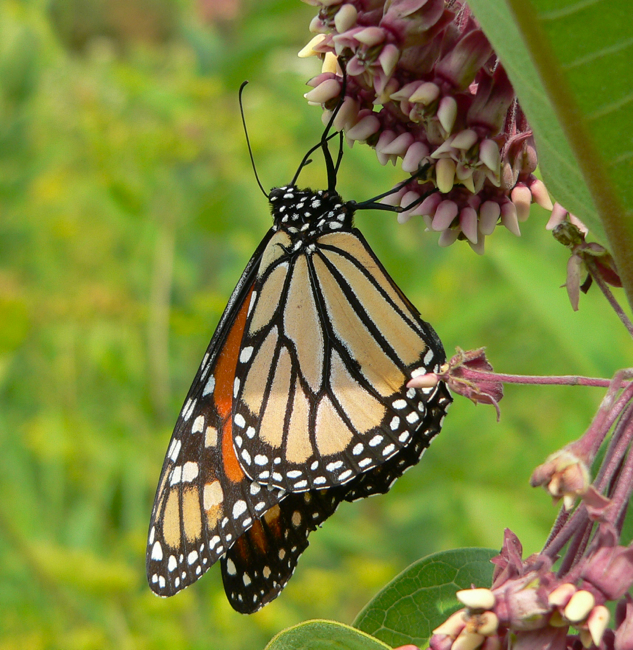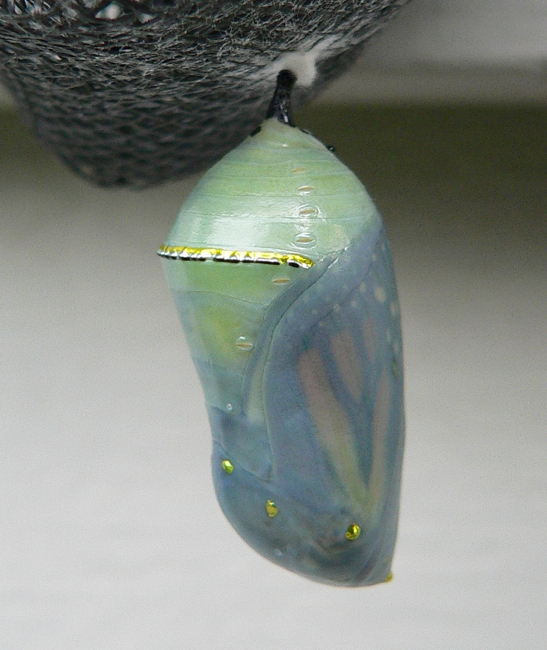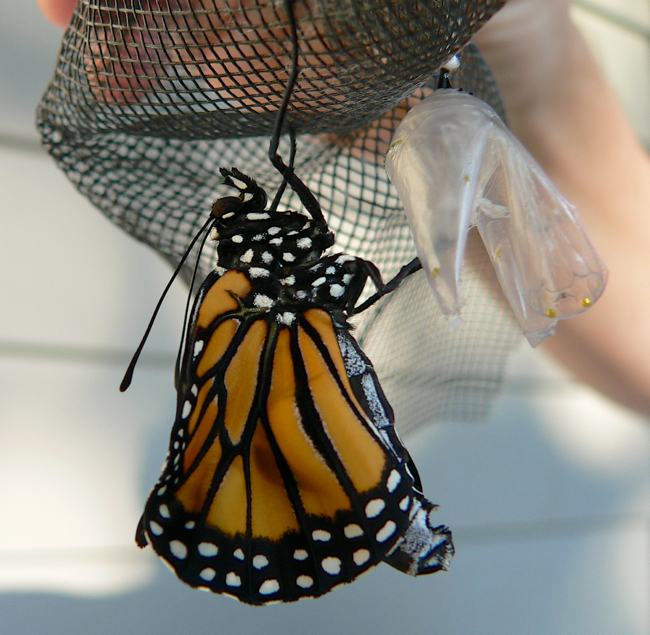Caterpillar foods: milkweeds
The first Monarchs usually arrive here by the end of June, and the last of the migrating ones are gone by the end of September.
Since 2017 we’ve been doing a ‘migration count’. We count all the adult Monarchs we see on our afternoon walks from the middle of August until the migration is over. Since we take the same walk every afternoon, at about the same time, the numbers give us some idea of how the year has gone for the Monarchs, and the timing of the peak of the migration. Here’s the chart we’ve made of those counts.
During migration they nectar on Rough Blazing Star, New England Aster, native thistles, and Stiff and Showy Goldenrod.
9/4/2005
8/8/2005
9/5/2011
8/28/2013
8/28/2013
8/31/2014
9/9/2014
9/29/2012
10/19/2008
10/26/2014 A late Monarch – newly emerged; resting in the sun getting up enough energy to fly
11/2/2014 This is the latest I’ve ever seen a Monarch. I think the odd coloration must be damage from the cold.
7/12/2009 Monarch caterpillar on Whorled Milkweed
7/21/2009 Monarch caterpillars on Common Milkweed
8/6/2005 Monarch chrysalis
8/9/2005 close to emergence
8/10/2005 almost ready to emerge
8/10/2005 newly emerged Monarch
8/15/2006
9/5/2010 This is the only time I’ve seen a light colored Monarch.
5/28/2014 mated pair
9/10/2010 Migrating Monarchs on Showy Goldenrod
9/6/2010 Migrating Monarchs on Stiff Goldenrod






















